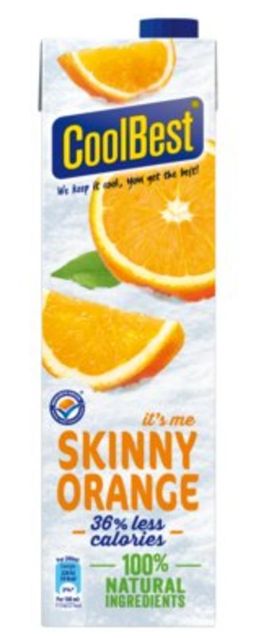What ingredients do you think are in the product below on the left? No, don't keep reading, I really want your opinion. Go on. I can wait. You can also share your thoughts with me by email. Done? The applicant felt he had been misled. He thought that the product only contained orange juice and so felt cheated when the rest of the packaging revealed that the product contained 33% water. Misleading! The new manufacturer, Riedel, stated that after the brand was acquired, the packaging was immediately changed to 70% juice, 30% water. Albert Heijn (which also received a complaint as the distributor) concurred.

The President first looked at the old label and recited the assessment framework (which has since become standard): interested consumers read the list of ingredients, but a statement on the packaging can still mislead them. Keeping that in mind, the President found that the consumer could only interpret the packaging as indicating that its contents consisted exclusively of orange juice. This is reinforced by the pictures of oranges and the phrase '100% natural ingredients'. This interpretation is not altered by the word 'Skinny', or the phrases '36% less calories' and 'a dash of water', or by the list of ingredients.
While I'm at it, the President must have thought, I may as well go ahead and assess the new label (the image on the right), since the applicant found the new label misleading as well. This is what makes this judgment so incredibly NEWSworthy. The Dutch Advertising Code Committee (Reclame Code Commissie, RCC), is specifically prohibited from issuing opinions on advertisements that have not yet been published. And it certainly does not issue opinions on its own initiative. The President decided to forego this rule for practical reasons, holding that the new label was not misleading. All's well that ends well?
The content of this article is intended to provide a general guide to the subject matter. Specialist advice should be sought about your specific circumstances.

